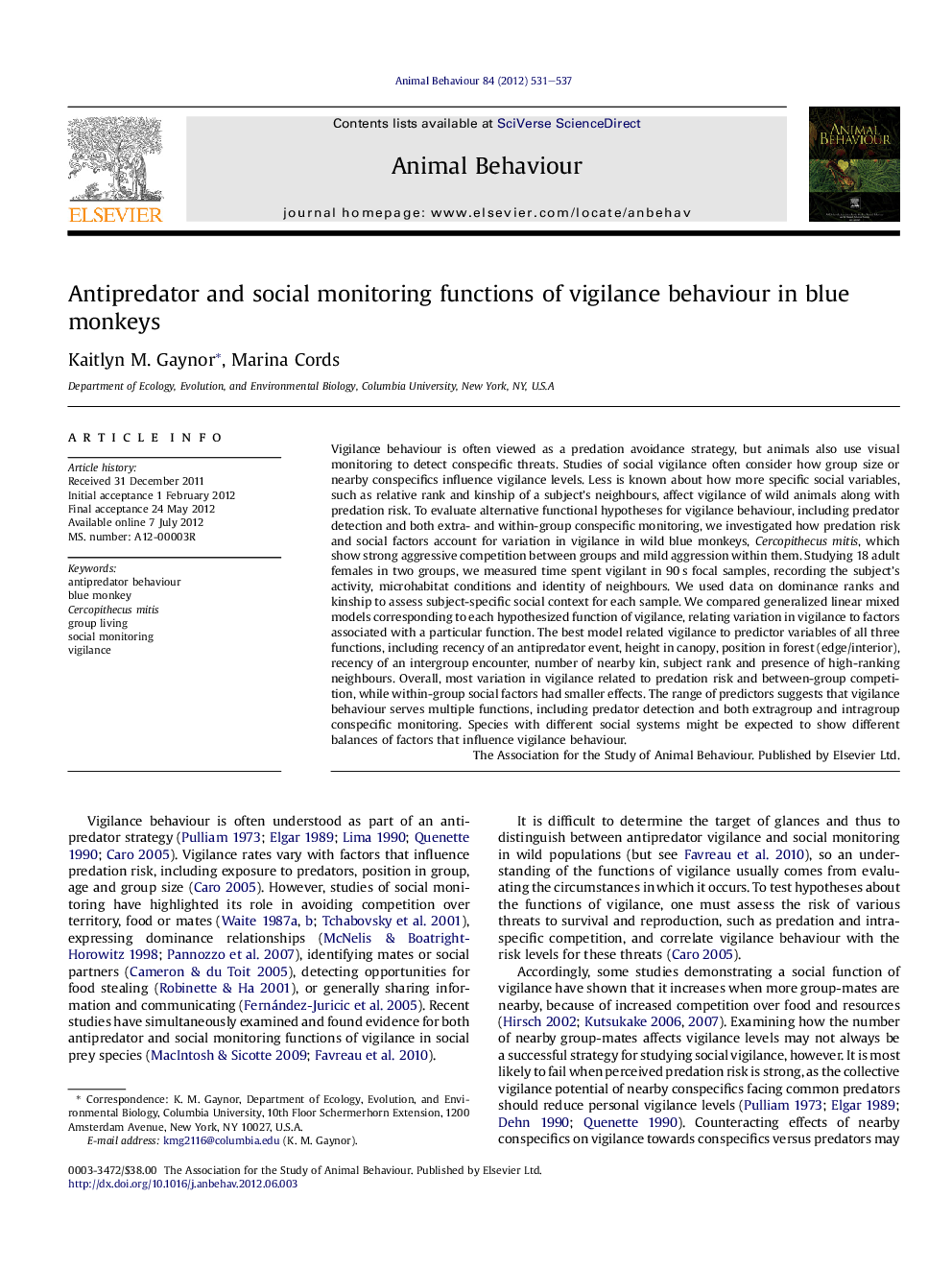| کد مقاله | کد نشریه | سال انتشار | مقاله انگلیسی | نسخه تمام متن |
|---|---|---|---|---|
| 2416826 | 1104299 | 2012 | 7 صفحه PDF | دانلود رایگان |

Vigilance behaviour is often viewed as a predation avoidance strategy, but animals also use visual monitoring to detect conspecific threats. Studies of social vigilance often consider how group size or nearby conspecifics influence vigilance levels. Less is known about how more specific social variables, such as relative rank and kinship of a subject’s neighbours, affect vigilance of wild animals along with predation risk. To evaluate alternative functional hypotheses for vigilance behaviour, including predator detection and both extra- and within-group conspecific monitoring, we investigated how predation risk and social factors account for variation in vigilance in wild blue monkeys, Cercopithecus mitis, which show strong aggressive competition between groups and mild aggression within them. Studying 18 adult females in two groups, we measured time spent vigilant in 90 s focal samples, recording the subject's activity, microhabitat conditions and identity of neighbours. We used data on dominance ranks and kinship to assess subject-specific social context for each sample. We compared generalized linear mixed models corresponding to each hypothesized function of vigilance, relating variation in vigilance to factors associated with a particular function. The best model related vigilance to predictor variables of all three functions, including recency of an antipredator event, height in canopy, position in forest (edge/interior), recency of an intergroup encounter, number of nearby kin, subject rank and presence of high-ranking neighbours. Overall, most variation in vigilance related to predation risk and between-group competition, while within-group social factors had smaller effects. The range of predictors suggests that vigilance behaviour serves multiple functions, including predator detection and both extragroup and intragroup conspecific monitoring. Species with different social systems might be expected to show different balances of factors that influence vigilance behaviour.
► Predation risk and social factors influence vigilance in wild blue monkeys.
► The primary function of vigilance in blue monkeys is most likely predator detection.
► The identities, but not number, of neighbours influenced vigilance duration.
► In a mildly aggressive species, social monitoring is a minor component of vigilance.
► Social systems may explain interspecific variation in functions of vigilance.
Journal: Animal Behaviour - Volume 84, Issue 3, September 2012, Pages 531–537